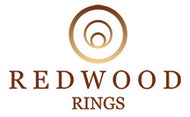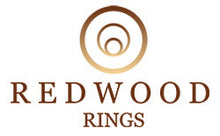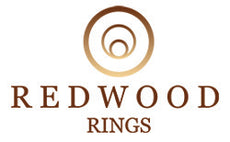Will Tungsten Rust?

Tungsten, known for its remarkable properties such as high-temperature resistance and immense strength, has long been a preferred material in both industrial applications and jewelry making. Its economic viability coupled with impressive physical characteristics makes it a topic of interest for engineers, jewelers, and consumers alike.
However, a common and crucial question arises when considering this robust metal: Will tungsten rust? Rust, typically a concern for metals exposed to the elements, can greatly affect the longevity and appearance of metal products.
Will Tungsten Rust? No, pure tungsten is chemically inert and does not undergo rust or corrosion.
How Rust Occurs?
Rust, known chemically as iron oxide, occurs when iron or its alloys undergo oxidation in the presence of moisture and oxygen, a process not applicable to tungsten due to its significantly different atomic structure. Unlike iron, tungsten’s sturdy electron configuration makes it highly inert, meaning it doesn’t readily react with oxygen or water under normal conditions.
This inert property is why tungsten doesn’t rust, even in high-temperature settings like light bulb filaments that can reach up to 2,500°C. Instead, it forms a protective oxide layer that prevents further degradation. In practical applications, this results in extended durability and lower maintenance costs, making tungsten a dependable and economical material for various industries.
Tungsten Strength
Tungsten's corrosion resistance is a standout feature that sets it apart from many other metals. When compared to metals like iron, which readily oxidizes to form rust, or silver that tarnishes over time, tungsten maintains its integrity and appearance due to its strong atomic bonds and high activation energy for reaction. This inherent resistance is further evident when examining the metal's behavior under various conditions through graphical analysis.
Tungsten, with its atomic number 74, stands out in the periodic table due to its remarkable physical and chemical properties. It boasts the highest melting point of all metals at a staggering 3,422°C (6,192°F) and exhibits a tensile strength that can exceed 1510 megapascals.
These attributes make it an ideal candidate for applications that demand durability and resistance to extreme conditions, such as in aerospace and military technologies. Additionally, its thermal conductivity is valued in electrical applications, where consistent and efficient heat dissipation is crucial.

The Conditions for Tungsten Corrosion
While tungsten's resilience is notable, it is not entirely impervious to corrosion, particularly under extreme conditions. At very high temperatures, specifically above 600°C, pure tungsten begins to react with atmospheric oxygen to form tungsten oxide. This process is a gradual one, where the rate of oxidation significantly increases as temperatures approach the 1000°C mark and beyond.
The reaction is characterized by the formation of tungsten trioxide (WO3), which gives a rusty brown coloration—not true rust, but a form of high-temperature oxidation. This reaction is contingent on the availability of oxygen and the sustained high temperatures that are rarely encountered in typical ambient environments.
Structure
The electronic structure of tungsten plays a crucial role in this oxidation process. With its [Xe] 4f^14 5d^4 6s^2 electron configuration, tungsten has four unpaired electrons in its 5d shell, making it thermodynamically predisposed to react with oxygen, which seeks two electrons to fill its own valence shell. At elevated temperatures, this reaction becomes kinetically feasible, leading to the aforementioned oxide formation.

Jewelry-Grade Tungsten
Jewelry-grade tungsten typically utilizes a nickel-binder alloy, which enhances the metal's natural luster and resistance to oxidation. Nickel binders create a chemically inert alloy that doesn't react with oxygen at room temperatures, thereby maintaining its pristine appearance over time. This grade is preferred for jewelry that's worn daily and exposed to various environmental factors, making it an ideal choice for items that are subjected to frequent contact and varying environmental conditions.
Industrial-Grade Tungsten
On the other hand, industrial-grade tungsten is often alloyed with cobalt binders to prioritize hardness and durability over tarnish resistance. While still tough, cobalt-binder alloys can react with the skin's natural oils and other environmental factors, leading to oxidation that can diminish the metal's appearance and potentially cause skin irritation for some wearers.
Did you know?
Tungsten’s initial application dates back over 350 years. It was incorporated by Chinese porcelain craftsmen who employed a tungsten pigment of a unique peach color.
Making an Informed Choice
Making an informed choice is crucial for consumers considering tungsten for their needs, whether for jewelry or industrial applications. First and foremost, understand the specific requirements of your intended use. For example, prioritize jewelry-grade tungsten with a nickel binder for its hypoallergenic properties and superior resistance to tarnish if you're seeking a tungsten ring. Verify the purity and composition of the tungsten alloy, as some products may be mixed with inferior metals that compromise quality.
Researching and purchasing from reputable vendors is essential. Look for those who provide detailed product information, transparent sourcing, and customer reviews. A reputable seller should also offer a comprehensive warranty or guarantee, indicating confidence in their product's quality. For industrial uses, consider the material's properties in the context of its intended application, such as its resistance to high temperatures or specific chemicals.
Lastly, be wary of prices that seem too good to be true. While tungsten is generally more affordable than precious metals like gold or platinum, exceptionally low prices may indicate a compromised product. Investing more upfront for a high-quality item can lead to longer-term satisfaction and performance. Consumers can confidently select a tungsten product that meets their expectations and needs by considering these factors.

Conclusion
Tungsten doesn't rust or corrode under normal conditions due to its chemical stability. However, at very high temperatures above 600°C, it can oxidize, forming tungsten oxide.
There are different types of tungsten, like jewelry-grade and industrial-grade. Jewelry-grade tungsten, mixed with nickel, is resistant to tarnishing and hypoallergenic, making it suitable for daily wear. On the other hand, industrial-grade tungsten, often mixed with cobalt, is more durable but less resistant to tarnish, making it ideal for industrial uses.
Before buying tungsten products, it's important to research, check the product quality, and consider the intended use. This ensures you get a high-quality product that meets your needs.





